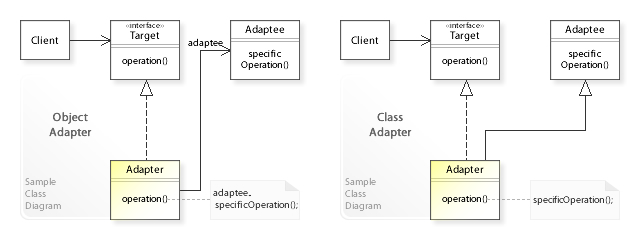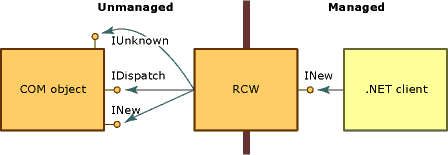What is Design Pattern?
A design pattern is a general recurring solution to a commonly occurring problem in software design.
In this article, I will explain to you what is the adapter design pattern and when to use it in a real-world example. Before discussing the problem, let’s create a simple application in. NET.
The Adapter pattern lets you adapt one interface to another
Let’s consider the following code.
void Main()
{
var result = new ThirdParyAPI().GetCustomer();
Console.WriteLine(result.ToString());
}
public class Customer
{
public string Name { get; set; }
public string City { get; set; }
public string Address { get; set; }
}
public static class CustomerDataProvider
{
public static List<Customer> GetData() =>
new List<Customer>
{
new Customer { City = "Italy", Name = "Alfa Romeo", Address = "Address1" },
new Customer { City = "UK", Name = "Aston Martin", Address = "Address1" },
new Customer { City = "USA", Name = "Dodge", Address = "Address1" },
new Customer { City = "Japan", Name = "Subaru", Address = "Address1" },
new Customer { City = "Germany", Name = "BMW", Address = "Address1" }
};
}
public class ThirdParyAPI
{
public string GetCustomer()
{
return JsonConvert.SerializeObject(CustomerDataProvider.GetData());
}
}
You are consuming one third party API in your application. Currently, the API is sending the response in JSON format now the company decided to change the response from JSON to XML.
NEW API
public class ThirdParyAPI
{
public XDocument GetXML()
{
var xDocument = new XDocument();
var xElement = new XElement("Customers");
var xAttributes = CustomerDataProvider.GetData()
.Select(m => new XElement("Customer",
new XAttribute("City", m.City),
new XAttribute("Name", m.Name),
new XAttribute("Address", m.Address)));
xElement.Add(xAttributes);
xDocument.Add(xElement);
return xDocument;
}
}

By Vanderjoe - Own work, CC BY-SA 4.0, Link
There are two ways to handle the above problem
- Make changes in your exiting application
- Add an Adapter between your application and third party API so that there are no changes required in your app. As shown in the below figure.
Adapter Pattern
As per the Wikipedia
The adapter pattern is a software design pattern (also known as Wrapper, an alternative naming shared with the decorator pattern) that allows the interface of an existing class to be used as another interface

Solution
To handle the above scenario, we can use the Adapter design pattern.
Let’s code the solution
STEP 1
create an interface named IConvertor (you can be named according to your application)
public interface IConvertor
{
string ConvertXmlToJson();
}
STEP 2
Create a class named XmlToJsonAdapter and Inject the dependency
public class XmlToJsonAdapter : IConvertor
{
private readonly ThirdParyAPI _xmlConverter;
public XmlToJsonAdapter(ThirdParyAPI xmlConverter)
{
_xmlConverter = xmlConverter;
}
public string ConvertXmlToJson()
{
string jsonText = JsonConvert.SerializeXNode(_xmlConverter.GetXML());
return jsonText;
}
}
Now change your application as shown below
void Main()
{
// BEFORE CHANGES
// var result=new ThirdParyAPI().GetJSON();
// Console.WriteLine(result.ToString());
// AFTER CHANGES
var adapterResult = new XmlToJsonAdapter(new ThirdParyAPI()).ConvertXmlToJson();
Console.WriteLine(adapterResult.ToString());
}
When to Use Adapter
We should use the Adapter class whenever we want to work with the existing class, but its interface is not compatible with the rest of our code. The Adapter pattern is a middle-layer that serves as a translator between the system implemented in our project and some third party class or any other class with a different interface.
Design Patterns You’re Already Using in the .NET Framework
Runtime Callable Wrapper (RCW)
